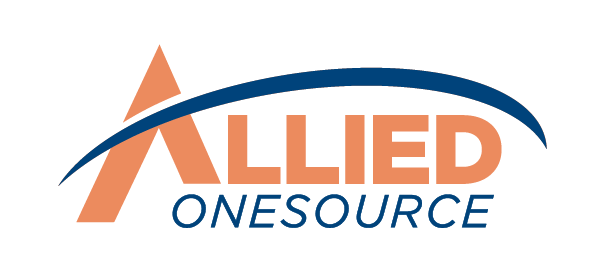The Hidden Cost of High Turnover: Why Every Resignation Hurts More Than You Think
Every employee resignation creates a financial impact that extends far beyond replacement costs. While most leaders focus on obvious expenses like recruiting and training, the real damage runs much deeper. High turnover directly undermines productivity, destabilizes teams, and reduces profitability in ways that rarely appear on standard financial reports.
The Hidden Costs of High Turnover
Employee departures create multiple hidden costs that impact every aspect of business operations. These expenses build up over time, making their true scope difficult to measure until significant damage occurs.
Understanding the complete financial impact helps employers recognize why retention deserves serious investment and strategic attention.
1. Reduced Productivity and Efficiency
New employees need months to reach full productivity. Even experienced workers must learn company systems, processes, and culture before performing at peak levels. During this learning phase, output drops significantly while wages stay the same.
New hires work more slowly and make more errors than experienced employees. Their frequent questions interrupt colleagues' work, while teams must reduce their pace to provide training and support. This disruption often leads to project delays and missed deadlines.
For complex roles, this learning period typically lasts three to six months. During this time, companies pay full salaries while receiving reduced output. When multiple employees leave within short periods, these productivity losses multiply and create substantial financial losses.
2. Lower Morale and Higher Burnout
Regular resignations create immediate pressure for remaining employees who must handle additional responsibilities until replacements arrive. Longer work hours and higher stress levels become normal, making quality standards harder to maintain.
This workload pressure creates a harmful cycle. Overworked employees feel undervalued and begin questioning their job security. Stress-related burnout leads to more sick days and lower performance, which puts more pressure on remaining team members.¹
The impact goes beyond individual stress. High turnover rates show instability to your entire workforce, encouraging valuable employees to look for external opportunities before conditions get worse.
3. Broken Operational Consistency
Employee departures disrupt established workflows and client relationships. New workers handle tasks differently from their predecessors, creating inconsistent customer experiences that can damage long-term business relationships.
Important company knowledge leaves with departing employees, creating serious gaps in expertise and understanding. Key processes may fail when experienced personnel leave without proper knowledge transfer, forcing teams to rebuild systems with incomplete information.
Read More: How to Manage Vacation Season Staffing in Finance and Administration Without Overburdening Your Team
Project continuity suffers when team composition changes frequently. Established working relationships end suddenly, requiring time and energy to rebuild trust and communication patterns. This instability makes maintaining quality standards and achieving business objectives much more difficult.
Practical Strategies for Reducing Employee Turnover
Successful organizations fight turnover through targeted retention strategies that address specific causes of employee departure.
The most effective approaches combine strong leadership development with meaningful employee investment, creating workplaces where talented professionals want to build long-term careers.
1. Strengthen Leadership and Employee Engagement
Strong managers serve as the primary defense against employee turnover. Research shows that people leave managers, not companies, making leadership quality the most important retention factor.
Effective leaders need ongoing training in communication skills and team management techniques. Regular one-on-one meetings with each team member create opportunities to discuss career goals, address concerns, and provide meaningful feedback beyond annual reviews.
Recognition programs that celebrate both major achievements and daily contributions directly impact employee satisfaction. Leaders who actively listen to employee ideas and implement practical suggestions demonstrate genuine respect for their team's expertise.
Clear communication about company direction helps employees understand their role in company success and feel valued as important contributors.
Read More: Enhancing Company Culture in Call Centers - 4 Strategies for Improved Employee Engagement
2. Offer Competitive Compensation and Complete Benefits
Total compensation packages must reflect both market rates and employee priorities. Regular salary research against industry standards ensures your organization stays competitive for top talent, while complete benefits show a long-term commitment to employee well-being.
Basic benefits, including health insurance, retirement contributions, and paid time off, represent minimum expectations in today's market. Additional offerings such as professional development funding, conference attendance, and skills training help your organization stand out from competitors while building employee capabilities.
Clear promotion paths help employees see their future within your organization. When combined with transparent promotion requirements and regular career development discussions, these paths transform jobs into career opportunities that employees actively protect and pursue.
3. Hire for Cultural Fit
Preventing turnover requires smart hiring decisions that focus on cultural fit alongside technical skills. Honest communication about role expectations and workplace culture during interviews prevents early resignations caused by mismatched expectations.
Complete interview processes should test both professional skills and cultural compatibility. Allowing candidates to meet potential teammates and observe actual work environments helps both parties make informed decisions that benefit everyone long-term.
Detailed reference checks reveal important insights about work styles, reliability, and professional growth patterns. Post-hire surveys conducted at 90-day intervals identify potential process improvements and help refine selection requirements based on actual outcomes.
Studying the characteristics of your most successful long-term employees provides valuable data for future hiring decisions. Understanding which traits connect with retention and performance helps optimize recruitment investments and build stronger, more stable teams.²
For more insights on how to optimize your recruitment investments, download our whitepaper - "Maximizing ROI Through Strategic Workforce Optimization"
Build Better Retention with Allied OneSource
High turnover rates create hidden costs that build up over time, damaging organizational stability and profitability across all industries. Allied OneSource helps companies identify these hidden expenses and implement targeted retention strategies that protect their workforce investments.
Our workforce management expertise helps organizations build complete retention programs that address specific causes of employee departure. Through strategic planning and proven methods, we help companies create workplaces where talented professionals choose to build lasting careers.
Ready to eliminate hidden turnover costs and strengthen your organization? Partner with us at Allied OneSource to develop a complete retention strategy designed for your specific business needs.
References
- ForbesBusinessCouncil. (2025, August 11). 20 Warning Signs Of Employee Burnout. Forbes. https://www.forbes.com/councils/forbesbusinesscouncil/2025/08/11/20-warning-signs-of-employee-burnout/
- American Staffing Association. (2024). Staffing Employee Turnover Edged Down to 414% in 2023; Tenure Up. American Staffing Association. https://americanstaffing.net/research/turnover-and-tenure/











